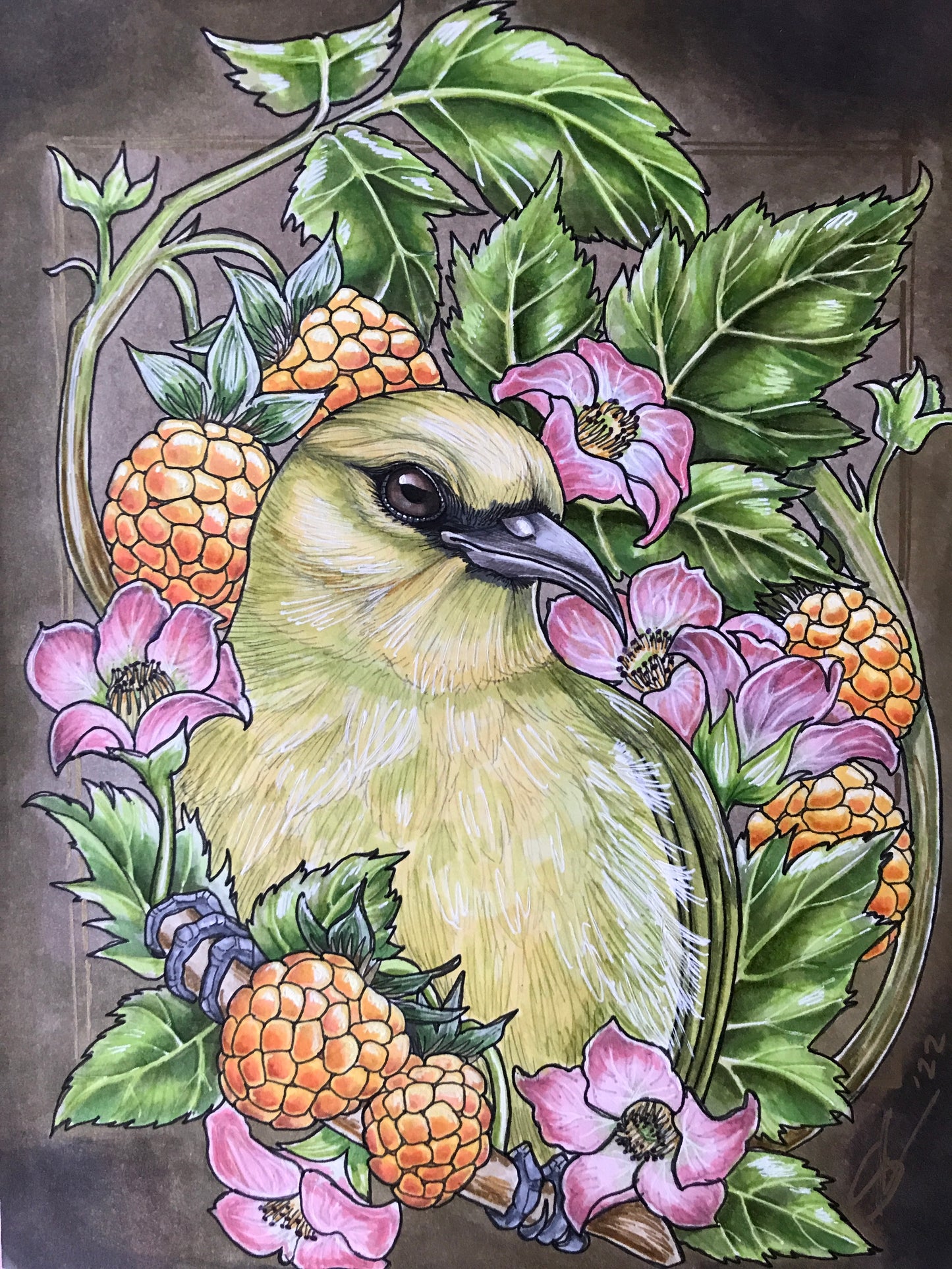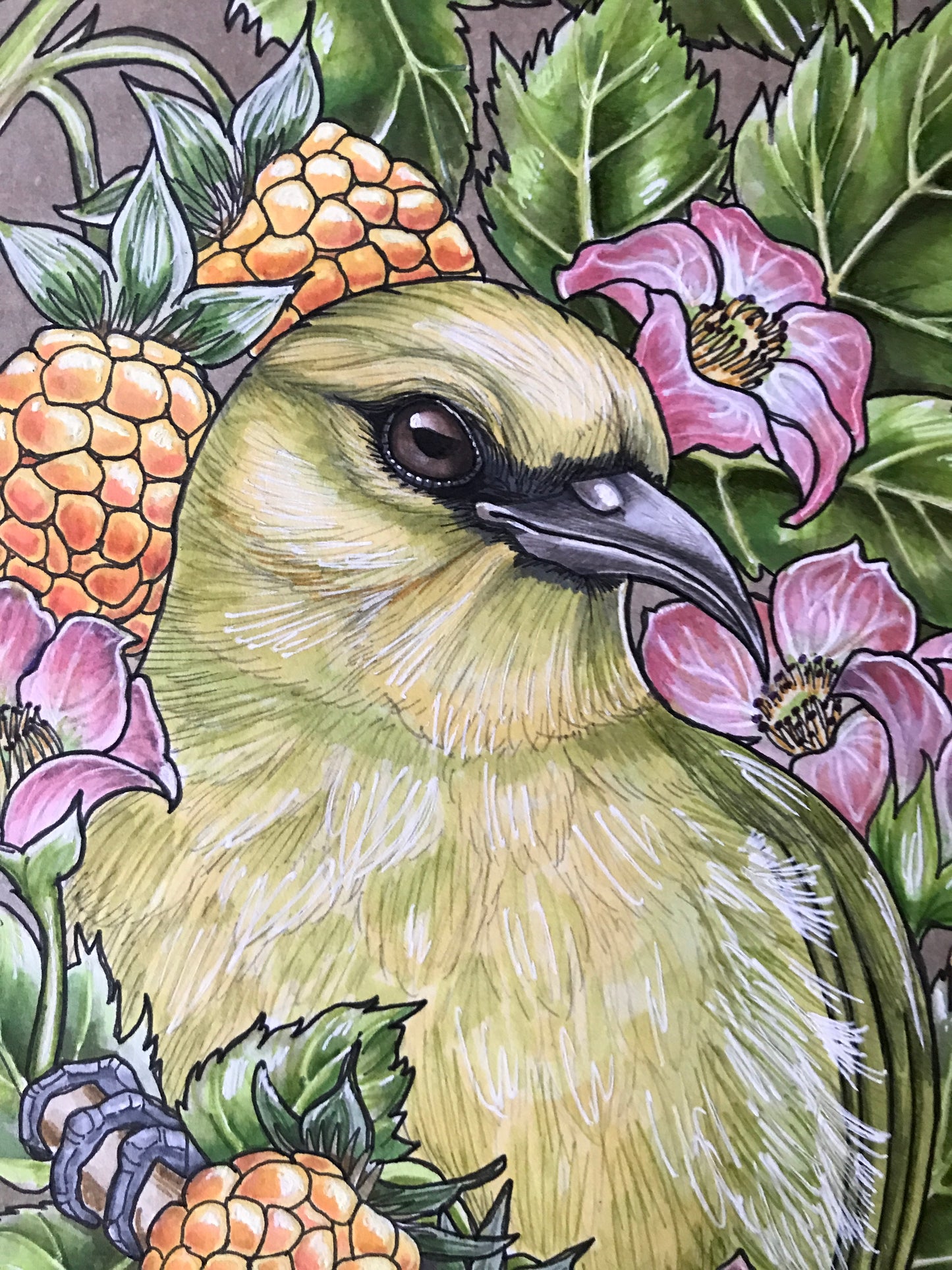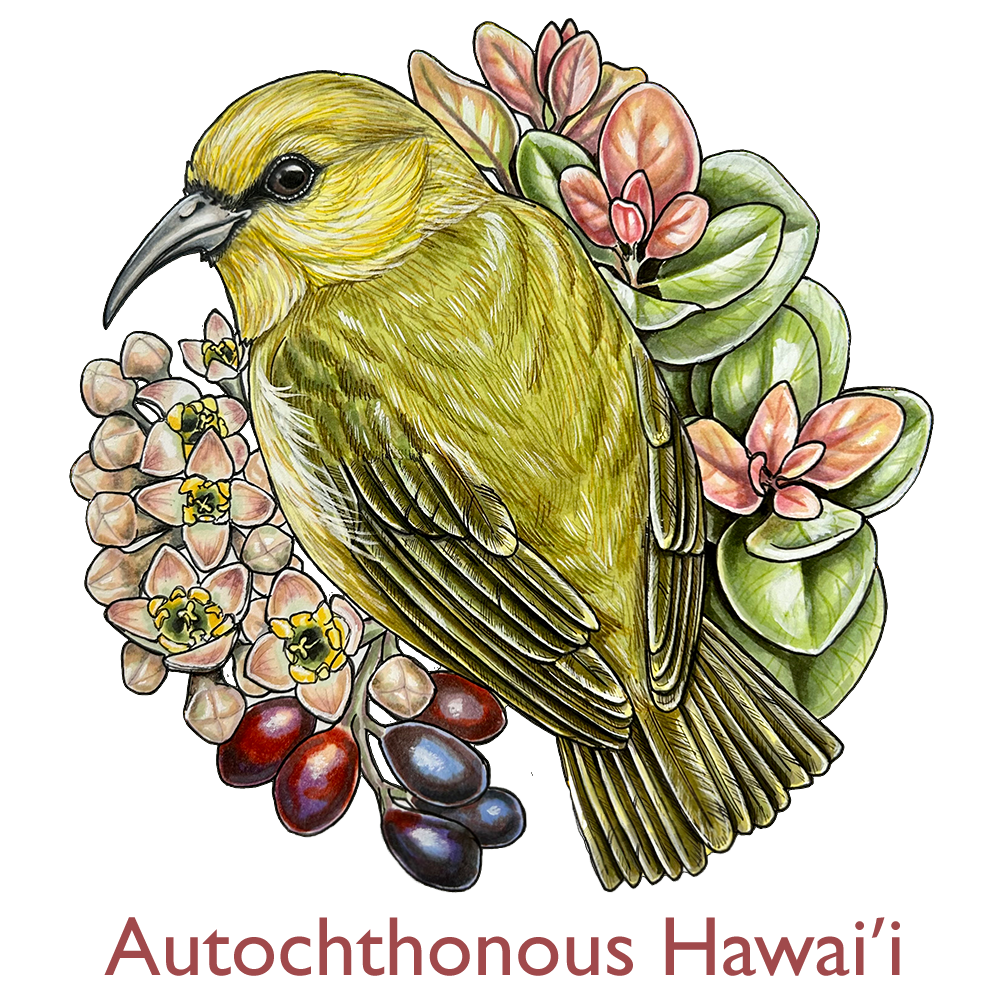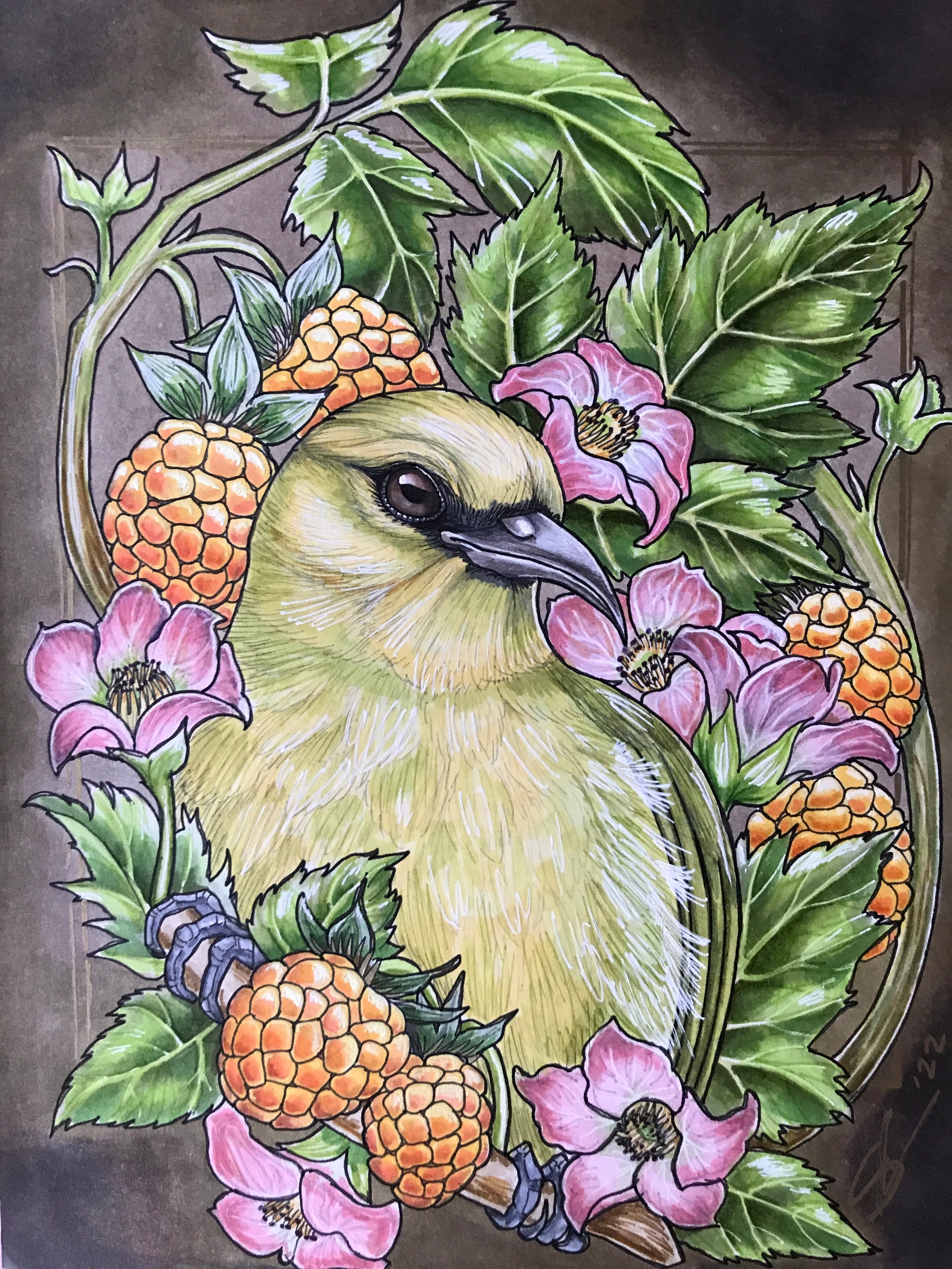Autochthonous Hawai'i
Hawai'i 'Amakihi and 'Ākala original
Hawai'i 'Amakihi and 'Ākala original
Couldn't load pickup availability
Original 5.5"x7.25" illustration.
There are two ‘ākala species in Hawai’i, Rubus hawaiensis and R. macraei. Prickles—a typical trait in the genus—are significantly reduced and sometimes absent in both species. This trend toward loss of defenses is common in Hawaiian flora. Both species produce edible fruit and look similar, and for some time they were believed to be closely related. DNA sequencing revealed that the two actually originate from separate colonizing lineages, with R. hawaiensis being sister to a North American species and R. macraei more closely related to Pacific species. This suggests that the loss/reduction of prickles noted in ‘ākala arose in two separate lineages due to similar selection pressures.
‘Amakihi feed on nectar from plants such as ‘ōhi’a lehua, ‘ākala, 'ohelo, and ‘iliahi. Of the three ‘amakihi species, C. virens is the only one that is listed as Least Concern; the O’ahu and Kaua’i ‘amakihi are both listed as Vulnerable by the IUCN. ‘Amakihi, along with ‘apapane, are the two Hawaiian Honeycreepers that show some resistance to avian malaria, a mosquito-transmitted disease that is all too often fatal for birds in this group ('amakihi and 'apapane can still die from this disease though!).
Hakalau Forest National Wildlife Refuge is one of few places on Hawai’i Island where rarer honeycreepers such as ‘ākepa, ‘ākiapōlā’au, and ‘alawī are stable or increasing. Hakalau is also a place where plants like ‘ākala can thrive in abundance, surrounded by a diverse selection of other native plants, including rare and endangered ones like the spectacular Cyanea shipmanii. Protecting and supporting places like Hakalau is critical for ensuring that our endemic species have a fighting chance in this age of extinction.




